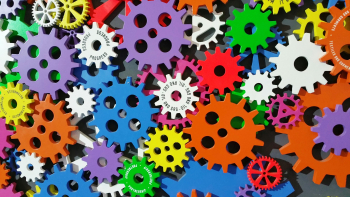

By Maggie Molina | Fri, January 31, 25
NEEP is kicking off the New Year with renewed commitment to advance energy efficiency through regional collaboration, innovative programs, and research on best practices. With rising concerns across the region about energy affordability, new trends in the power sector like load growth, increasing severity of climate impacts, and yes, uncertainty on the federal front, we know that 2025 will be a busy year and we are ready for the challenges ahead! Against this backdrop, we are committed to our enduring mission to save energy and money for households and businesses, create and sustain high-quality jobs for the regional economy, and reduce climate-warming emissions and other harmful pollutants.
The Mid-Atlantic and New England region has shown leadership on energy efficiency as a cornerstone of commonsense energy, climate, and economic policy. We see the importance of efficiency growing even more in 2025. Here, I provide an outlook of some state and local initiatives across the region, policy trends, and examples of partnerships to drive progress.
States Policymakers are Looking to Efficiency to Lower Energy Bills and Meet Climate Goals
Across the region, state legislative sessions are kicking into high gear and Governors’ offices are establishing annual priorities. The region is increasingly prioritizing energy affordability as customers in many states face rising energy prices. Energy efficiency investments will be critical to keeping bills low.
The good news is that nearly every state in the region has an energy efficiency resource standard (EERS), a multi-year requirement for utilities or program administrators to save a specified level of energy. Many states are now reimagining EERS policies to better align with state goals about climate, reliability, and affordability. For example, New Jersey recently approved a $3.8 billion energy efficiency plan through mid-2027 and is now aligning its programs to also support its climate goals. Massachusetts has a three-year, nearly $5 billion energy efficiency plan being considered by regulators for implementation beginning in 2025. Maine and Connecticut plans will also be considered soon. Pennsylvania’s EERS – Act 129 – will be considered for review in 2025 to begin June 2026. These policies that spur efficiency investments will be critical to keeping bills low for customers.
Efficiency will also be critical to meeting ambitious state climate goals. As the Trump Administration withdraws the U.S. from the Paris climate agreement, states will once again be tapped to lead on climate goals. We see many examples of state leadership on the horizon. In New York, Governor Hochul committed to more than $1 billion in climate investments. Energy efficiency investments will help reach the state’s climate goals, and in 2025 the state will be reviewing a five-year plan for utilities and state programs that invest in energy efficiency beginning in 2026.
Local Governments and Community Action Drive Results
We see action well beyond statehouses. Local governments and communities are committed to investing in energy efficiency through a range of strategies. For example, strong building codes and stretch codes drive efficient, resilient and low-carbon construction practices and help lower energy bills for renters and low-income households.
Cities are ramping up their efforts to benchmark building energy use for large buildings – providing a “miles per gallon” version of energy use data. For example, Providence, Rhode Island has completed the first year of reporting in its benchmarking program. Other cities, including New York City, Philadelphia, and Washington, D.C., are going further by establishing multi-year goals to achieve higher levels of building energy performance.
Innovative Strategies and Policies are Needed to Reach all Markets and Promote Affordability
State and local actors have critical work ahead in 2025 to ensure that efficiency programs are meeting a large swath of households and businesses. We have the technologies and best practices, but how can we scale to reach more community members? For example, increased commitments to multifamily programs will be critical to reaching low-income households and renters that have often been left out of efficiency programs. Programs like Massachusetts LEAN provide important one-stop-shop approaches to serving the multifamily segment.
We are also seeing innovative strategies to reach businesses including industrial customers. In Pennsylvania, the Reducing Industrial Sector Emissions in Pennsylvania (RISE PA) initiative will provide grants for small-, medium-, and large-scale projects at industrial facilities to reduce emissions. Energy efficiency investments are a critical path forward at industrial facilities to lower energy waste and invest in the local economy. And as the manufacturing sector contributes to load growth in the region, it will be critical to lead with energy efficiency.
On the policy front, we see an increased interest in energy affordability. As customers face high electricity prices, switching to climate-friendly heat pumps presents a strong economic case for some households, like those heating with fuel oil that tends to have high and volatile prices, but the economic case is more nuanced for homes heating with natural gas. Programs can stage and co-promote weatherization and heat pump upgrades to ensure that heat pumps are sized to the smaller loads needed in better-insulated homes. Innovative rate designs can also support heat pump adoption. For example, in Massachusetts, residential customers with a heat pump served by Unitil will have access to a new electric delivery rate in 2025 that is nearly two-thirds lower in the winter. Other utilities are developing or considering similar rates.
Regional Collaboration Will be Needed to Drive Energy Savings
In 2025, NEEP will host and facilitate dozens of working groups and coalitions to enhance regional collaboration and to build a community of practice around energy efficiency and electrification technology, policy, and program challenges and solutions. Some of these will support the design and launch of major new programs, most notably the New England Heat Pump Accelerator. Others will tackle research and promotion of best practices for topics like multifamily retrofits best practices and workforce development. We also look forward to convening our popular Community Workshop in April and annual Summit in June.
Working in Partnership Toward 2025 Objectives
NEEP looks forward to working across our region to advance energy efficiency for its multiple benefits –saving energy and money, lowering harmful pollution, creating high-quality jobs, and promoting modern and resilient technologies and building practices. We remain committed to driving regional collaboration to advance energy efficiency. Our work to build partnerships and support our region in reaching its energy, climate, and affordability goals has not changed. While we expect the road to be bumpy, we look forward to working in partnership on this journey together!


